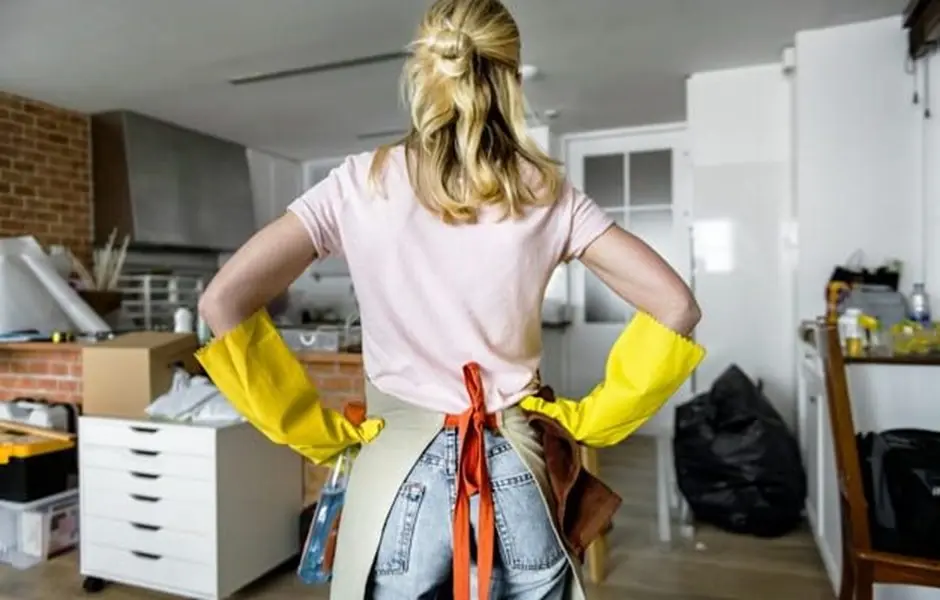Water infiltration into porous materials can lead to significant damage in a very short time frame. Water Damage Water damage restoration begins immediately after exposure to excess moisture, as standing water can cause extensive structural deterioration within seconds. Prolonged exposure, such as standing water that has soaked a property for over seven days, can result in severe foundational damage. The duration for which a property remains exposed to water directly impacts the severity of the destruction. For instance, water damage initiates as soon as a washing machine hose bursts, releasing water across the floor.
The surrounding floors, walls, nearby furniture, and personal belongings quickly absorb this excess moisture. Upholstered furniture cushions begin to leak dyes, permanently staining carpets and rugs. Homeowners who leave books, important documents, photographs, and other porous items near a broken washing machine will notice these belongings becoming warped and swollen from water exposure. Moisture affects all impacted building materials and possessions, leading to widespread damage.
Anticipated Course of Water Damage:
Like other emergencies, understanding what to expect and the timeline of water damage restoration can help property owners avoid unexpected setbacks and focus on returning to normal life. Typically, drying a water-damaged area takes at least two days, but it can vary significantly depending on the extent of damage. While hiring a general contractor might seem like the first step after water damage, contacting a professional water damage restoration service water damage restoration expert is often more effective.
A general contractor may recommend removing and replacing damaged structures, whereas a restoration service focuses on salvaging and repairing existing water-affected materials. Hiring a contractor may become necessary after the drying process to replace irreparable structures identified by the restoration team.
First Hour:
Water damage occurs rapidly, with visible consequences within minutes. Large pools of standing water saturate floors and walls, compromising mortar and wallpaper. Fabric-covered furniture starts to bleed dyes, causing permanent stains and damaging the home’s aesthetic. Items such as brightly colored cloth napkins or decorative paper products can release colors that stain contacted surfaces as water spreads.
Paper products suffer from blurring ink, warping, and distortion. If a dishwasher leaks during an absence of homeowners, drywall in the kitchen may swell and crack within hours. Over the first 24 hours, metal surfaces begin discoloring from contact with water, and a musty odor develops. Wooden table legs, cabinetry, and flooring absorb water, further escalating damage.
Initial 24 Hours:
Water damage restoration often goes unnoticed initially, with damage worsening over time. Within the first 24 hours, wall surfaces deteriorate as plaster and drywall break down. Mortar begins to erode and wallpaper peels off. Wooden furniture swells and can separate. Ink and fabric dyes continue to fade and bleed. Metals connected to water sources show early signs of rust, while mold and mildew start growing.
Within a Few Days:
By the second day without cleanup, wooden floors swell and warp, as do other wood elements such as baseboards, doors, and window frames. Mold spreads further, contaminating wet furniture and other décor, potentially leading to hazardous biological contamination, especially if sewage water is involved.
Water damage lasting a week significantly raises restoration costs and complexity. Contamination levels increase, requiring careful and thorough treatment. Few affected items remain salvageable after this period, and structural damage is almost certain. Mold and bacterial growth become severe risks, potentially spreading to other parts of the home.
Expert Drying Tips:
When appliances fail, homeowners should act quickly by shutting off the water supply. Immediate attention is crucial for effective water damage restoration. Promptly cleaning and drying any spilled water prevents further structural damage from soaking. If appliance failure causes leaks, turn off the water at the source, which is typically located in the basement or outside the home.
Taking these swift actions helps prevent additional flooding and damage, and homeowners must remember that water and electricity together pose serious safety risks.
Restoring Your Home’s Interior Environment:
After addressing initial moisture and structural concerns, the restoration process can proceed. This involves several stages, beginning with thorough assessment and drying. In severe cases, homeowners may need to temporarily vacate until restoration is complete, ensuring family safety from harmful contaminants.
Once standing water is removed, specialized dehumidifying equipment helps extract residual moisture trapped inside walls and other materials. The entire restoration process often takes several weeks, with homeowners advised to prepare for up to a month before reoccupying their home safely.
Conclusion:
Typically, water damage restoration spans three to five days depending on how long the property was exposed to water. Restoring the home to its pre-damage condition may require additional days or weeks, depending on the severity. Drying affected materials generally requires about 72 hours for one area, followed by up to two weeks for full repair and restoration. Variations depend on several factors, but homeowners can generally expect areas exposed to water or excessive moisture to fully dry within approximately five days.
If you want to learn more about Water Damage Restoration in Murrieta, visit our Real Estate category for additional resources and expert guidance.
Additional Insight: Preventive measures are crucial to minimizing water damage risks. Regularly inspecting appliances like washing machines, dishwashers, and water heaters for leaks can prevent costly damage. Installing water leak detectors with automatic shut-off valves is an effective strategy to reduce flooding incidents. Additionally, keeping gutters and drainage systems clear reduces water buildup around the foundation, limiting the risk of seepage. Understanding the signs of early water damage, such as musty odors or discoloration, enables timely intervention that can save significant restoration costs and preserve property value.



